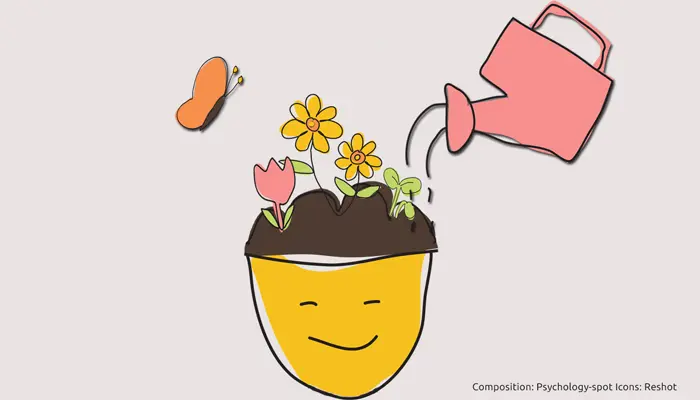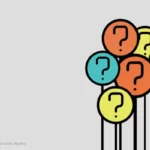
Throughout life we experience many situations that generate different affective states. We laugh and cry. We get angry and reconcile. We hate and we love. Those experiences – and the way we live and internalize them – are essential for our mental health, mental balance and personal growth.
In 2002, psychologist and sociologist Corey Keyes conducted a very interesting study, albeit with disturbing results. Keyes wondered what human flourishing is and how many people actually flourish. He considered that “flourishing” means living in an optimal range of human functioning characterized by gratitude, growth and resilience in which we maintain our emotional balance.
Languishing, on the other hand, is an intermediate state in which there are no mental disorders as such, but we fail to develop our potential, so that we could describe our lives as “hollow” or “empty”. It is a feeling of stagnation, vital dissatisfaction and quiet desperation or resignation in which we wear ourselves out without achieving anything relevant.
His epidemiological work suggested that in the United States only 17.2% of adults flourish, 14.1% suffer from major depression and the rest are basically limited to languishing. It is not that they had poor mental health, but that they did not advance.
The problem is that languishing doesn’t actually imply stagnation, but it doubles the chances of developing depression. Over time, it also often leads to more emotional distress, psychosocial impairment, and limits on daily activities and ability to work. Therefore, it is not a good perspective of life.
What does it predict if we will languish or flourish as a person?
In 2011, psychologists Barbara L. Fredrickson and Marcial F. Losada of the University of Michigan conducted another particularly interesting experiment on human flourishing in which they asked what factors can predict whether we will languish or flourish as a person.
There is a theory that positive emotions are evolved psychological adaptations that increased our ancestors’ chances of survival and reproduction. Unlike negative emotions, which limit our impulses toward specific life-saving actions, such as fight or flight responses; positive emotions expand our range of thoughts and actions, such as exploring and playing, thus facilitating behavioral flexibility.
Experiments support this idea. A research conducted at the University of Michigan found that negative emotions momentarily reduce repertoires of thought and action, while positive emotions broaden them. Therefore, the benefits of negative emotions are immediate, such as saving our lives, while the benefits of positive emotions are appreciated in the long term, since they help us create social connections, develop adaptive coping strategies and have a greater knowledge of the environment.
For example, positive attitudes such as interest and curiosity lead to exploration and thus more accurate knowledge than negative attitudes such as boredom and cynicism. Positivity drives exploration and creates learning opportunities while negativity drives avoidance, so we may miss out on good opportunities to learn more about the world around us.
Since positive emotions encourage more open attitudes, over time we develop more precise cognitive maps of what is good and bad in our environment. That knowledge becomes a personal resource that we will always have at our disposal. Although positive emotions are transitory, the personal resources that we accumulate in those moments of positivity are lasting.
As these resources accumulate, they act as a kind of “reserve” that we can draw on to manage threats and increase our chances of survival, as well as feeling better. Therefore, even if the positive affects are fleeting, they can trigger dynamic processes that stimulate well-being, growth and resilience.
In other words, the effects of positive emotions accumulate and combine over time, so they can transform people, improve their mental health, make them more integrated, more resilient and able to respond more effectively to challenges. Therefore, they are a vital factor to flourish.
The critical ratio of human flourishing
Fredrickson and Losada performed different tests on the participants to assess everything from their mental health to self-acceptance, purpose in life, mastery of the environment, positive relationships with others, personal growth, level of autonomy, as well as integration and social acceptance.
Also, every night, for 28 consecutive days, the participants had to indicate through a web application what emotions they had experienced during the day, both those of positive and negative valence.
Thus they discovered that people who flourished experienced at least 2.9 positive emotions for each negative one.
However, these psychologists also warn that without negative emotions, our behavior patterns would simply calcify. That is why they refer to what they call an “appropriate negativity”, which plays an essential role in the complex dynamics of human flourishing.
Gottman, for example, found in his research that conflict can be a healthy and productive source of negativity for couples, while expressions of disgust and contempt are more corrosive. That means that not all negativity is equally “bad.”
Appropriate negativity is therefore a necessary feedback, but only when it occurs for a limited time and under specific circumstances. On the other hand, inappropriate negativity is usually an absorbing and generalized state that dominates our emotional life for a long time, preventing us from growing.
Obviously, the positivity that allows us to flourish as a person must also be both appropriate and genuine. Fredrickson and Losada found that flourishing stagnates or even begins to disintegrate when the ratio reaches 11.6 positive experiences for each negative one. The point is that “too much”, even if “good”, isn’t positive.
In this sense, studies on nonverbal behavior have revealed that false or disconnected smiles generate the same brain activity related to negative emotions and activate abnormal heart function, suggesting that fake positivity may be more negative then positive
In general, the human flourishing theory indicates that it depends on dynamics in which positive and negative experiences are mixed in the right proportion. Those dynamics are not repetitive but innovative and highly flexible, but at the same time they are stable; that is, we must achieve a certain order in the chaos, but leaving the door open to the new.
Sources:
Fredrickson, B. L. & Losada, M. F. (2005) Positive Affect and the Complex Dynamics of Human Flourishing. Am Psychol; 60(7): 678–686.
Fredrickson B. L. & Branigan C. A. (2005) Positive emotions broaden the scope of attention and thought–action repertoires. Cognition and Emotion; 19: 313–332.
Keyes, C. (2002) The mental health continuum: from languishing to flourishing in life. J Health Soc Behav;
Rosenberg, E. L. et . Al. (2001) Linkages between facial expressions of anger and transient myocardial ischemia in men with coronary artery disease. Emotion; 1(2): 107-115.
Ekman, P. et. Al. (1990) The Duchenne smile: emotional expression and brain physiology. J Pers Soc Psychol; 43(2): 207-222.



